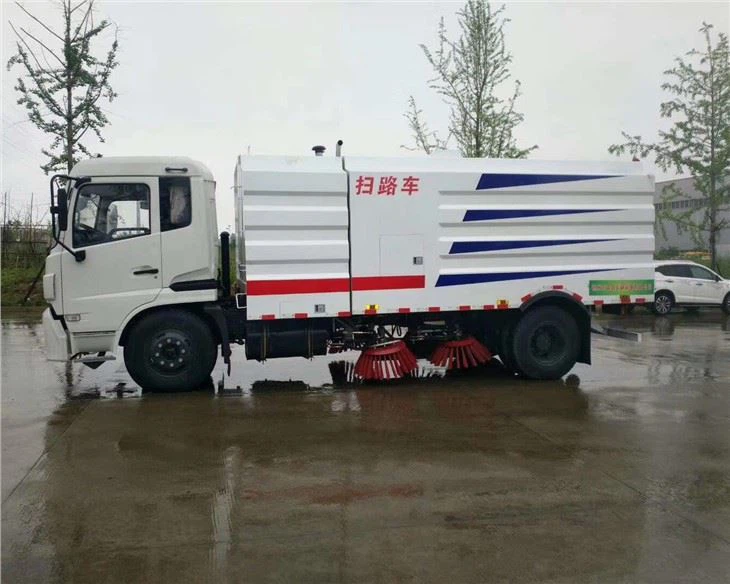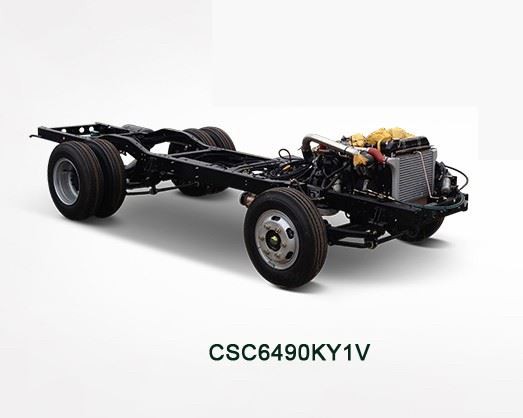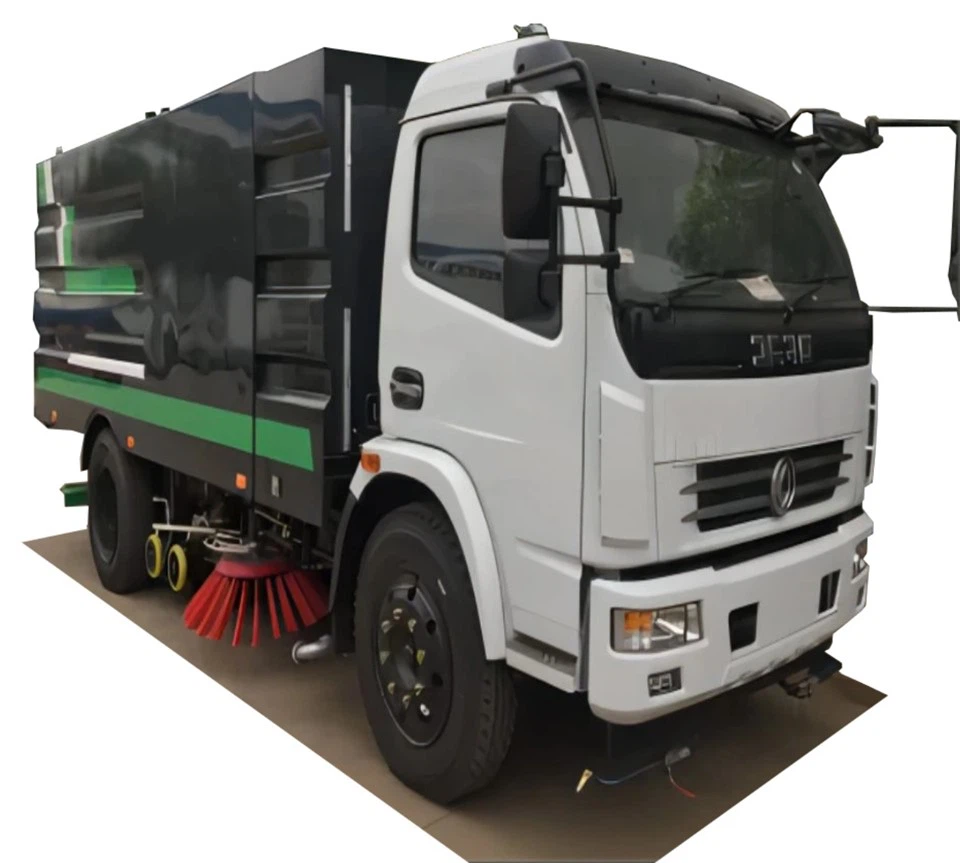Truck Hook Lift: A Comprehensive Guide to Understanding and Using This Versatile Equipment

When it comes to heavy lifting and transporting materials, few pieces of equipment are as effective as a truck hook lift. These systems are designed to streamline the process of loading and unloading heavy cargo, making them invaluable for construction, waste removal, and various industrial applications. In this article, we will dive deep into truck hook lifts, exploring their functionality, advantages, and key considerations for potential users.
What is a Truck Hook Lift?
A truck hook lift is a specialized mechanism used for lifting and transporting containers or other loads. It consists of a cab-mounted hoist that utilizes a hook mechanism to grasp the container, lifting it onto a flatbed truck. This system is particularly effective for moving waste bins, roll-off containers, or specialized equipment. One of the main benefits of a hook lift system is its flexibility—users can quickly switch between different types of containers as needed.
How Truck Hook Lifts Work
The operation of a truck hook lift involves several key components:
- Hook Mechanism: The hook is attached to a cable or chain system that raises and lowers the container.
- Hydraulic System: Hydraulic cylinders power the lifting operation, providing the necessary force to move heavy loads.
- Control System: Operators control the lifting process through a simple interface, ensuring precise and safe movements.
Components of a Hook Lift System
| Component | Description |
|---|---|
| Lift Frame | The structure that supports the hook lift and connects it to the truck chassis. |
| Hooks | Designed specifically to secure different types of containers. |
| Hydraulic Cylinders | Provide the necessary lifting force. |
| Control Valve | Regulates hydraulic fluid flow, controlling the lift’s movements. |
Benefits of Using Truck Hook Lifts
Truck hook lifts offer a myriad of benefits that make them appealing to various industries:
- Efficiency: Quickly load, transport, and unload containers, reducing downtime.
- Versatility: Ability to use different types of containers easily, catering to various needs.
- Space-saving: Allows for more effective space management on job sites.
- Cost-effective: Reduces the need for multiple vehicles for different transport needs.
Applications of Truck Hook Lifts
Truck hook lifts find applications in several industries, including but not limited to:
- Construction: For hauling debris bins, building materials, and equipment.
- Waste Management: Essential for transporting dumpsters and recycle bins.
- Landscaping: Moving soil, mulch, and landscaping materials.
- Logistics: Efficiently transferring goods between locations in a timely manner.
Choosing the Right Truck Hook Lift
When selecting a hook lift system, consider the following factors:
Load Capacity
Assess the maximum load you plan to lift. Truck hook lifts come in various sizes, and selecting one that matches your capacity needs is crucial for safety and performance.
Type of Containers
Consider the container types you will utilize. Ensure the hook lift system is compatible with the containers for optimal operation.
Vehicle Compatibility

Verify that the lift system is compatible with your truck’s specifications. This includes weight, size, and mounting options.
Hydraulic System Quality
Choose a hook lift with a robust hydraulic system that can handle the required load. Check for reputable manufacturers to ensure quality and reliability.
Installation and Maintenance of Truck Hook Lifts
Proper installation and regular maintenance are key to ensuring the longevity and effectiveness of your hook lift system.
Installation Process
Installing a truck hook lift typically requires professional assistance. The process generally includes:
- Assessing the truck’s specifications.
- Mounting the lift frame securely to the truck chassis.
- Connecting the hydraulic lines and electrical controls.
- Testing the system to ensure it functions properly.
Maintenance Tips
Regular maintenance will help extend the life of your hook lift and prevent potential issues:

- Inspect hydraulic fluids regularly for leaks or contamination.
- Check the lifting mechanism for wear and tear.
- Perform regular cleaning to avoid buildup of debris.
- Schedule professional inspections at least annually.
Common Issues and Troubleshooting
| Issue | Potential Cause | Solution |
|---|---|---|
| Container won’t lift | Low hydraulic fluid | Check and refill hydraulic fluid. |
| Unstable lifting | Worn-out lifting mechanisms | Inspect and replace. Consult a technician. |
Safety Considerations
When operating a truck hook lift system, safety should always be the top priority. Key safety considerations include:
Proper Training
Ensure all operators are adequately trained in the safe use of truck hook lifts to minimize the risk of accidents.
Routine Inspections
Conduct frequent inspections of the lift components to identify potential issues before they escalate.
Follow Manufacturer Guidelines
Always adhere to the manufacturer’s guidelines for operation, limit weights, and maintenance schedules.
Comparing Truck Hook Lifts to Other Systems
Truck hook lifts are just one option for transporting heavy containers. Below, we compare them to other common systems:
Truck Roll-off Systems
Roll-off trucks feature a similar loading mechanism but may have limitations in container versatility compared to hook lifts.
Dump Trucks
Dump trucks are excellent for certain applications but lack the flexibility of interchanging containers that hook lifts offer.
Flatbed Trucks
Flatbed trucks can transport various loads but do not offer the same ease of loading and unloading that a hook lift can provide.
Cost Analysis of Truck Hook Lifts
Understanding the cost implications of truck hook lifts is essential for budgeting in business operations:
Initial Investment
The purchase price of a hook lift system varies based on load capacity and features, typically ranging from $15,000 to $50,000.
Operational Costs
Consider maintenance and operation costs, including fuel, hydraulic fluids, and repair expenses. Routine maintenance is vital to keeping operational costs in check.
Potential Savings
By enhancing efficiency and reducing downtime, a truck hook lift can lead to significant savings in project timelines and operational costs.
Conclusion
Truck hook lifts are a vital tool for industries requiring efficient and versatile loading and transport solutions. By understanding their operation, key benefits, and considerations for use, businesses can make informed decisions that enhance productivity and safety.
Frequently Asked Questions (FAQ)
1. What types of containers can be used with a hook lift?
Hook lifts can typically accommodate various containers such as dumpsters, roll-off bins, flatbeds, and specialty containers designed for specific applications.
2. How often should I service my hook lift system?
It’s advisable to conduct routine inspections every six months and schedule a professional service at least once a year to ensure optimal performance.
3. Can I install a hook lift on any truck?
No, the truck must meet specific requirements regarding load capacity, frame size, and hydraulic specifications to ensure compatibility.
4. What are the safety guidelines for operating a truck hook lift?
Ensure operators are trained, conduct regular inspections, and adhere to the manufacturer’s operational guidelines to maintain safety.

5. How does a hook lift compare to a roll-off system?
While both systems serve similar purposes, hook lifts provide more flexibility in container types and faster loading/unloading capabilities.
6. What maintenance is required for a truck hook lift?
Regular maintenance includes checking hydraulic fluid levels, inspecting lifting mechanisms, and ensuring that all components are clean and functioning properly.
